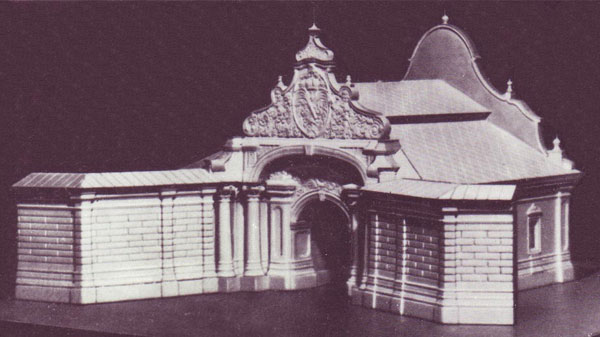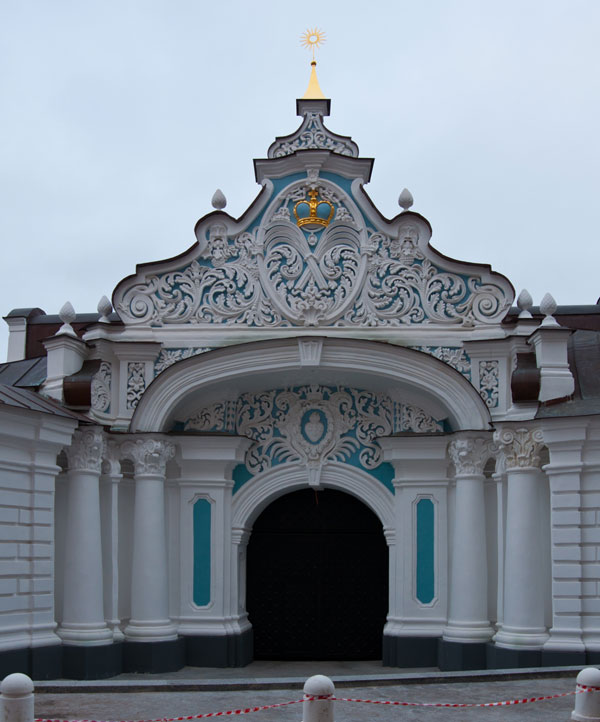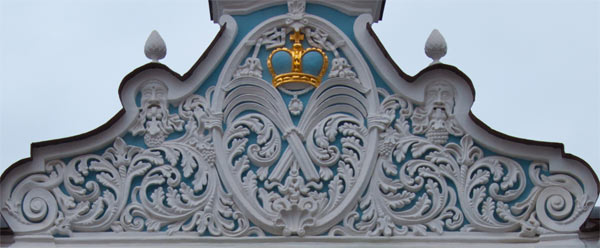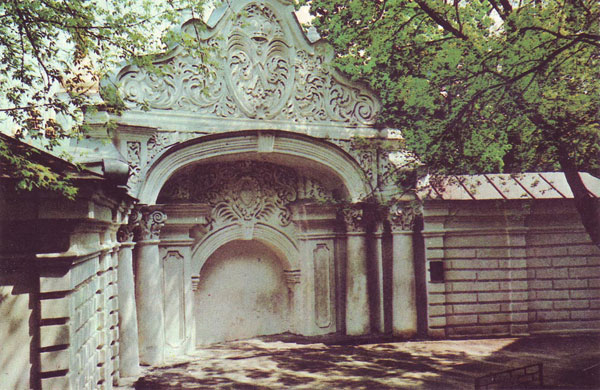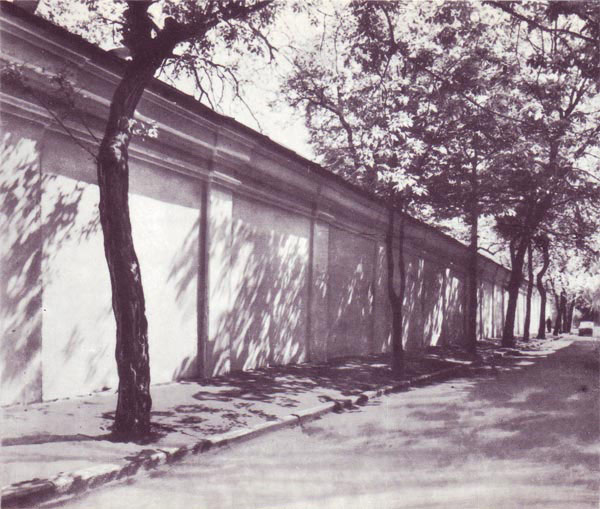ua. ru. en.
Museum ST. SOPHIA CATHEDRAL
Historical information
Plan of museum
ST. SOPHIA CATHEDRAL
Narthex
Architecture and murals
- Plan, Ground floor
- Mosaics
- Frescos
- Graffiti
- other details
Sarcophagus of Yaroslav the Wise
North cloister
Towers
Lofts
- Plan, First floor
ARCHITECTURAL MONUMENTS OF THE 18TH CENTURY
Bell Tower
Seminary
Cells of the Cathedral Elders
Metropolitan's Residence
Refectory
Consistory
South Entrance Tower
Zaborovsky Gate
First Rus library
BRANCHES OF THE MUSEUM
|
|
Excursions Kiev
weekend in Kiev
trip to Kiev
Excursions
tours to Kiev
Sights of Kiev
ZABOROVSKY GATE (WEST GATE) and the BRICK WALL
To view the Zaborovsky Gate you must go out through the south entrance tower on to Vladimir-skaya Street, turn to your right and pass round the corner to Streletsky Lane which runs along the west bounds of the museum grounds.
On the east side of Streletsky Lane, you will find remains of the original brick wall of the monastery built in 1745-1746. A wall such as this enclosed all the monastery in the 18th century. But in the 19th, wherever the district was given over to building dwelling houses, the old wall on many sites was torn down and there arose new brick walls along Vladimirskaya Street and in Bogdan Khmelnitsky Square. So that today, only sections of the old 18th-century wall remain: these are on Streletsky Lane, Streletskaya Street and, in part, beside the Bell Tower in Bogdan Khmelnitsky Square. The 18th-century wall was made of bricks and laid with a lime mortar. It was about four metres high. The wall incorporated flat pilasters and was topped with a complex-shaped cornice. Along the bottom ran a two-stepped socle.
Some distance along Streletsky Lane, you will find the Zaborovsky Gate (West Gate) - one of the most remarkable specimens of Ukrainian baroque.
The gate was built in 1746 as the western main entrance to the metropolitan's courtyard. It was named after the Kiev Metropolitan Raphael Zabo-rovsky, who ordered it built. He was a highly educated man for his time: he was much attracted to the art of architecture and building; he both sketched and drew up plans himself. To carry out his wide building plans, he enlisted the services of J. Schadel who constructed a number of notable buildings in Kiev. The Zaborovsky Gate is one of the architect's finest creations. The memorial of the gate that exists today is only a part of the 18th-century gate which took the form of a one-storey rectangular building 16.5 m x 13.5 m. In the middle part, there was an arched entrance four metres wide with a guardhouse on each side. From the west and east sides above the entrance towered rich baroque pediments. In the 18th century, a street ran right from the Golden Gate to the Zaborovsky Gate. From this street you could see the whole complex of the St. Sophia Monastery, with the metropolitan's residence in the foreground. But as Kiev began to be built up in the 19th century, following the new city planning, the Zaborovsky Gate found itself isolated in a remote little lane, and the ground level before it had risen by one metre. Therefore, in the years 1822 and 1823, the gate was finally blocked up and the guardhouses dismantes. In place of the metropolitan's front courtyard, a garden was laid out. Today, the front portal and the pediment are the only surviving parts of the original structure.
West gate (Zaborovsky Gate|. Reconstruction by N. Kresalny:
On either side of the gateway stand a massive pilaster and a pair of columns topped with Corinthian capitals. Over them is a beautiful ¦ baroque pediment. The placement of the columns and pilasters in different planes makes the whole structure particularly picturesque, and helps it blend harmoniously with the trapeziform area before the Gate. The inset design on the pilasters and the rounded columns set in niches produce a rich chiaroscuro effect. The beautiful outlines of the gate are enhanced by rich stucco ornamentation which covers the whole of the pediment and the arch. The stucco mouldings speak of the fact that folk craftsmen took part in the work. In the centre of the pediment is a big medallion depicting crossed torches. The Zaborovsky family crest- a flaming heart encircled with palm leaves - can be seen over the arch.
The general composition of the gate, the coordination of architectural forms and all architectural elements speak of the fine artistic taste and high mastery of the creators of this little masterpiece. The Zaborovsky Gate is one of the most valuable gems in the treasury of ukrainian architecture.
West Gate (Zaborovsky Gate). Western view:
Pediment:
Zaborovsky Gate before restoration work done in the 2011:
Monastery wall. 18th century:
 Mosaics and frescoes of St. Sophia Cathedral IN KIEV
Mosaics and frescoes of St. Sophia Cathedral IN KIEV
Virtual tour around the museum’s grounds of Saint Sophia Cathedral
National Historical Reserve "St. Sophia Cathedral in Kiev"
Address: Vladimirskaya Str. 24, Kiev Ukraine
Underground station "Golden Gate".
Hours: 10:00 - 17.30
Closed: Thursday
